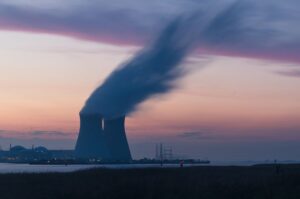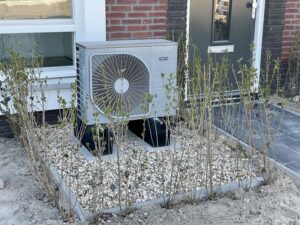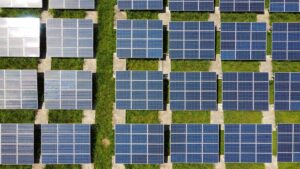In a world constantly discussing the importance of decommissioning fossil fuels, renewable energy has been benchmarked as one of the leading solutions to all our energy limitations.
Renewable energies rely on natural resources refreshed daily (sunlight, wind, water flow, etc.) to transform natural forces into energy that powers our homes and businesses.
Among the main viable solutions presented, wind energy is potentially the most mature of these solutions, with knowledge of the field that is centuries old. Nevertheless, there are still some challenges to be overcome for the full-scale use of wind energy.
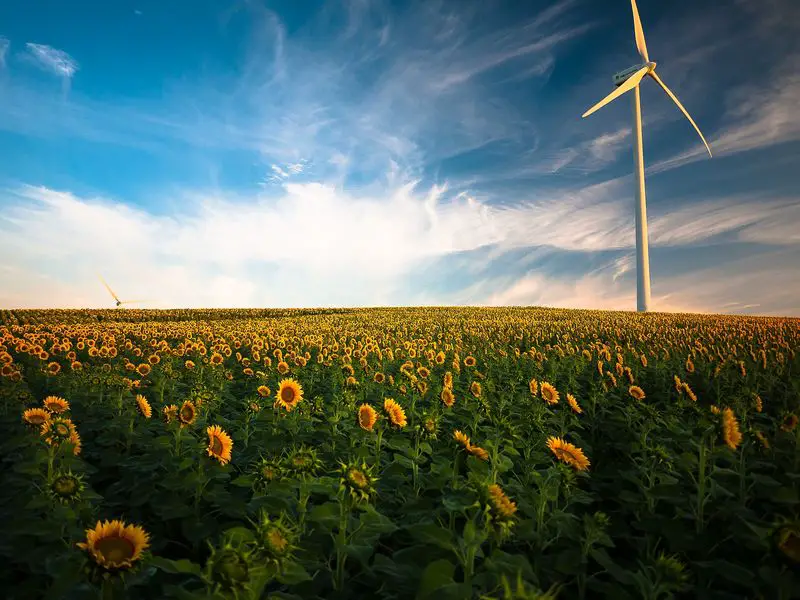
Environmental Benefits of Wind Energy
1. The Carbon Footprint of Wind Turbines
Despite being considered a clean source of energy, wind energy has a significant carbon footprint associated with the materials used in the construction, operation, and distribution of wind turbines.
The manufacturing of a wind turbine produces, on average, 1,700 tons of CO2eq per turbine, considering the extraction and tailoring of steel (66-79%), fiberglass (11-16%), iron (5-17%), copper (1%) and aluminum (0-2%).
Similar to many other renewable sources, the significant contribution to carbon emissions of wind turbines is associated with the production phase, slowly dissipating during its lifetime.
It is estimated that during the entire lifespan of a wind turbine, carbon emissions can be reduced to values as low as 6 g of carbon emitted per kWh, which is over 100-fold lower than the emissions associated with traditional coal (900 g CO2eq/kWh). This reduction is reached by considering the initial carbon emissions dissipated through years of using the resource.
The environmental impacts associated with producing wind turbines and operating them should be taken into account to allow the widespread use of these resources. For example, steel production has also been associated with the emission of SOx, NOx, PM2.5, hazardous waste, and solid waste that contaminate water sources and compromise land use.
Downstream carbon impact needs further consideration, with innovations such as clean steel representing a significant step towards a more sustainable wind turbine operation. Nevertheless, their low environmental impact, long lifespan, and ability to generate electricity in remote areas still render them a viable, sustainable solution from an environmental perspective.
2. Impact on Local Ecosystems and Potential Danger to Wildlife
As per their operations, wind turbines have some recognizable environmental impacts but still perform much better than traditional fossil fuels.
Among the main impacts caused, wind turbines are reported to produce around 45 decibels of sound pressure, which tend to be undetectable for humans at over 500 meters away. However, recent studies developed by Teff-Seker et al. (2022) show that the impact of this additional noise on the environment to the ecosystem around it (birds, insects, rodents, etc.) is still unknown, and countries like Italy, Germany, and the U.S. lack proper legislation pressing for the need of environmental reports in their licensing process. To this extent, knowledge of the environmental impacts of the noise produced by wind turbines is still scarce.
Wind turbines have been reported to influence the migration routes of birds, disrupting their patterns and leading to their deaths.
As turbines spin, their blades can reach speeds as high as 150 km/h, representing a serious risk to wildlife. Among the species most affected by them, bats are especially vulnerable due to their unique echolocation, which fails to identify the blades as a collision risk. The Texas State University and Bat Conservation International have been analyzing the use of a Bat Deterrent System (NRG Systems) to reduce the collision number for bats. By placing the device on wind turbines in Los Vientos Wind Energy Facility, they have managed to reduce bath death by 54%. Curiously, even though wind turbines do lead to the death of thousands of birds yearly, cats are a much larger risk to their survival (see graph below).

3. Aesthetic and Acoustic Impact
Wind turbines are also associated with aesthetic impacts, as their presence changes the landscape and can be seen from far away.
Studies developed by Klaeboe and Sundfor (2016) show that reports on noise sensitivity from the local population are more correlated to aesthetic rejection than to an increase in decibels reported.
Thus, investing in improving social relations and dynamics with the presence of windmills is crucial to guarantee their acceptance and widespread adoption.
Economic Performance
As countries invest in expanding their production of renewable energy, the wind has represented the fastest-growing resource with improvements in technology, distribution, and social acceptance, ranking them as the easiest to implement and use.
This interest in renewable energy is incited by the increase in national pledges to reach net zero and the number of commitments being adopted by nations and industries alike.
Overall, the demand for clean energy has progressively created financial and technological incentives driving the expansion of market availability, research, and commercialization of renewable energies. The latest developments of COP27 have supported the growing trend to invest in renewable energies. Recent developments in the technology have allowed a 5-fold increase in wind power capacity from 2009 to 2019, reaching up to 1412 TWh/year.
As a result of continuous technological development, wind energy prices have also dropped for the final consumer, with the Levelized Cost of Electricity (LCOE) dropping by 50% worldwide.
Wind Energy Can Create Jobs and Support Rural Economies
The expansion of wind power capacity is also translated into increased jobs as the construction of wind farms spreads. IRENA’s latest report shows that 12.7 million jobs were created in 2022 due to the expansion of renewable energy research, development, and implementation.
Wind energy alone produced 1.4 million jobs, with nearly 48% of these positions located in China as the country invests heavily in expanding its wind farms.
Along with job creation, wind farms also support rural economies through their compensation for land use. In 2019, the use registered nearly $706 million paid out to the local farm owners for land lease, which support the local economy and revitalize the farmer’s ability to invest in their farms.
Overall, expanding and diversifying energy sourcing will continue to promote the creation of new jobs while capacity expands to reach energy requirements.
It is estimated that this increase will start reaching a plateau when market needs are met and when the sourcing of wind energy reaches areas of higher complexity.
To best understand the limitations and challenges of wind energy market expansion, it is important to have a clear understanding of the main applications and potential markets for the energy generated.
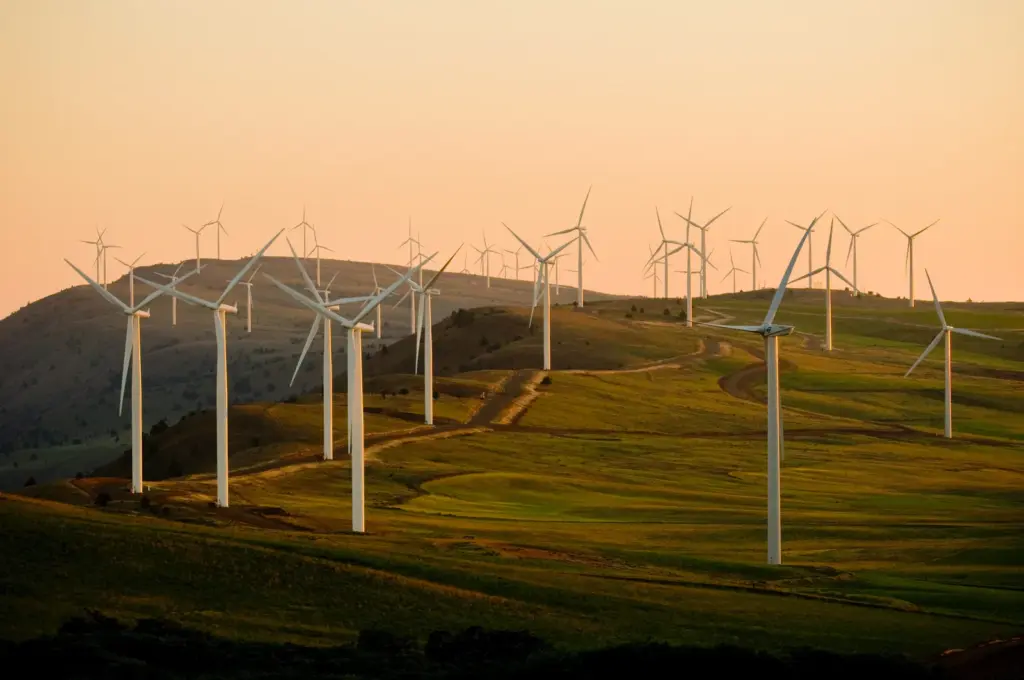
Alternative Applications of Wind Energy
Humanity has used wind energy for centuries, with early use dated as early as 5.000 BC on sailboats circulated in the Nile. Early use of wind-supported water pumps, windmills for food production, and even windpumps to drain lakes.
Nowadays, the wind is used as a source of kinetic energy captured by the blades and converted into mechanical rotational energy. The rotational energy is converted through a series of mechanisms into electrical energy, which is then sent to the distribution lines reaching homes and industries.
More recently, alternative uses for wind energy are being tested with the ability to either harvest wind in a more effective way or reduce further environmental impacts associated with the current operational model of wind turbines.
For example, Kite Power has developed a kite-like device that harnesses electrical energy with 90% less material and the potential to reach production with efficiencies that double the numbers obtained by wind turbines.
There are considerable technological advantages of working on airborne wind energy especially related to the high wind speeds reaching higher altitudes.
As companies develop these kite-like (or balloon-like) solutions, arguments on the lower requirement for land use, ability to automate, more stable energy production, and lower material resources required for construction all play in favor of enabling the development of these technologies.
Meanwhile, the automotive industry has also explored on-the-ground alternative use for wind. With most of its use being for recreational purposes, wind-powered cars have been studied and optimized throughout the year to harness the most energy power possible, resulting in extremely aerodynamic cars with a near-zero carbon footprint.
Similarly, focused on tackling the colossal carbon footprint of the shipping industry, Oceanbird is developing a full-scale wing sail prototype to be deployed in 2024.
The venture estimates the vessel will be 200 meters long and 40 meters wide, with the ability to carry 7000 cars, with a carbon footprint 90% smaller than conventional ships.
Some limitations are expected, with strict recommendations regarding power use, navigation routes, and speed to ensure the best use of wind currents and recognizant flow patterns. Nevertheless, its ambitious goal for Oceanbird has to revolutionize the shipping industry.
Main Challenges for Wind Power
1. Location of Wind Farms
Aside from the environmental challenges already discussed, Wind turbines present other operational challenges that might determine their feasibility.
The most important challenge for wind energy is adequate installation location. To ensure continuous wind activity, turbines need to be installed at the top of hills, open planes, coastal areas, and other remote areas that might be hard to access or present other disturbances to the local population that compromises their operation.
Moreover, remote locations also demand additional costs with installing the wind turbine and distributing the energy produced.
Local weather also affects the feasibility of wind farms. As the weather is affected geographically, it might imply areas that are only partially capable of producing the volume of wind necessary for operations, with extended periods of inactivity. This is particularly compromising when considering offshore wind farms, prone to suffer from weather fluctuation with the increase in wave height and ocean turbulence. The level of disturbance in the water risk displacing or rupturing distribution cables, which would compromise the energy generation site.
2. Costs
On average, installing a wind turbine costs $3.5 million, generating 2 megawatts when active. Along with the wind turbine itself, additional costs in transport, installation, and adequate connection to distribution lines can ramp this number above $4 million.
Therefore, installation location significantly affects the feasibility of deploying the technology freely. Most importantly, the inability to ensure wind consistency can render the solution a risk and prevent investors from expanding wind farms and relying on the energy source.
On the other hand, business models and current energy schemes might also be a compromise for wind energy. Areas that rely heavily on hydropower might have additional challenges when integrating wind power into their grid.
Hydropower generates energy by allowing the flow of water to be converted into electric energy. This process is achieved by enclosing large water volumes in dams, reducing the river’s water supply. In cases where there is a demand for additional water flow (high-temperature weather, intense farming activity in the surrounding, droughts), relying on the energy produced by hydropower can be mandatory, as seen in California. On the other hand, the power produced by wind sources would be unable to be commercialized, representing a financial compromise.
Wind Energy Pros and Cons – Main Take Away
- Wind turbines present low environmental impact with a significantly reduced carbon footprint compared to traditional fossil fuel energy sources.
- Wind energy investment generates jobs worldwide and supports local farmers through land-use leases.
- Recent technology has increased the economic feasibility of wind turbines, spiking the general interest and adoption of the technology.
- Wind as a tool has the potential to be explored in other areas, such as transportation and shipping.
- Location is detrimental to wind turbine feasibility, influencing final costs, year-long production, and regulatory limitations that might challenge the operation of wind turbines.
Conclusions
Wind energy is pivotal in the global shift towards sustainable energy solutions.
Its advantages are manifold, from its low environmental footprint to its potential for significant economic stimulation and job creation. As with any emerging technology, it has its challenges, including location-specific constraints and ecological considerations.
The journey of wind energy, from ancient sailboats to modern wind turbines, underscores humanity’s timeless pursuit of harnessing nature’s power.
We invite our readers to join the conversation. What are your thoughts on wind energy and its potential? Leave your comments below, and if you found this article helpful, please share it.

